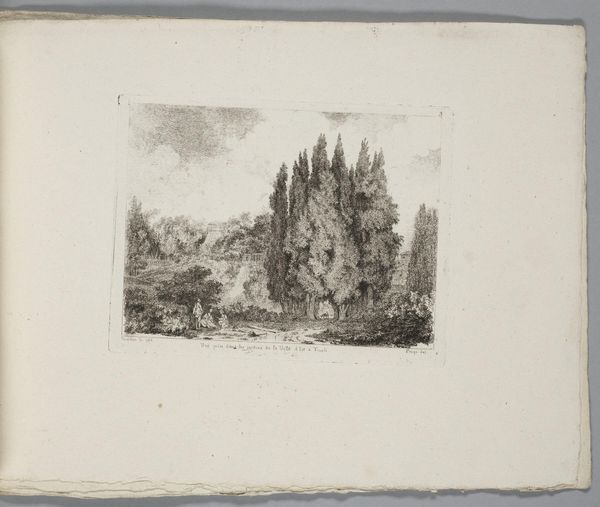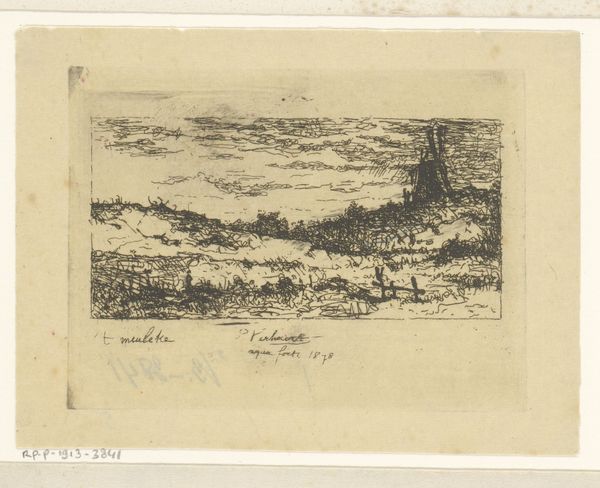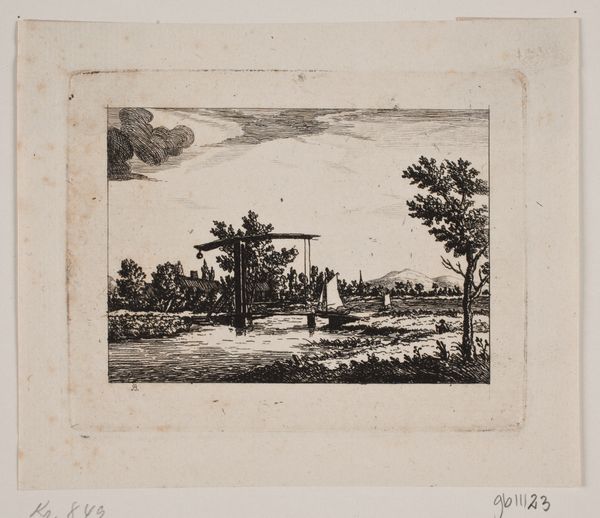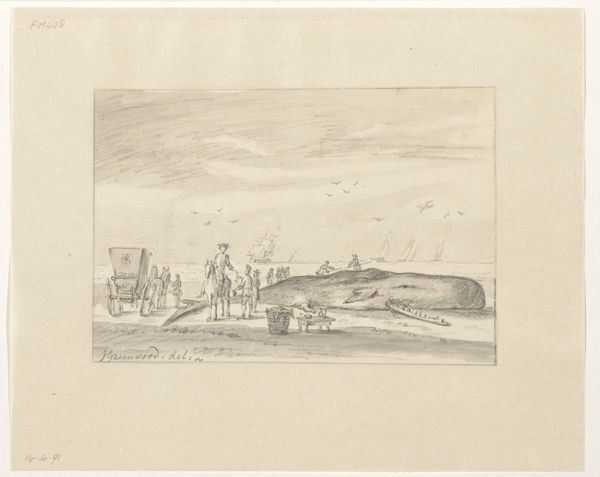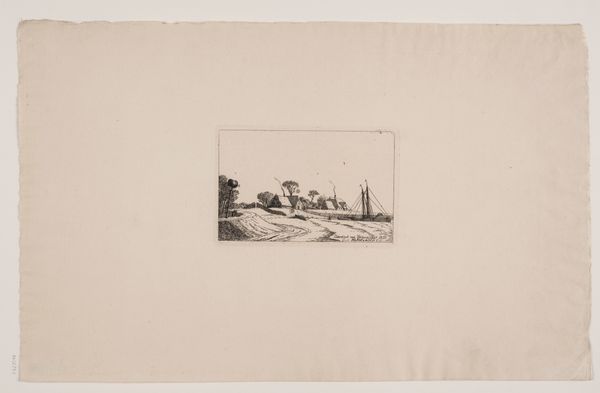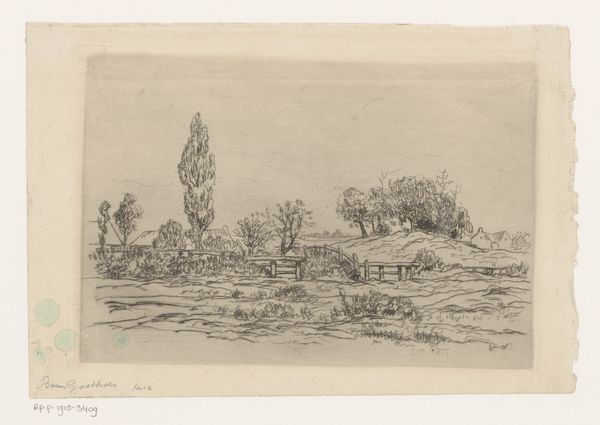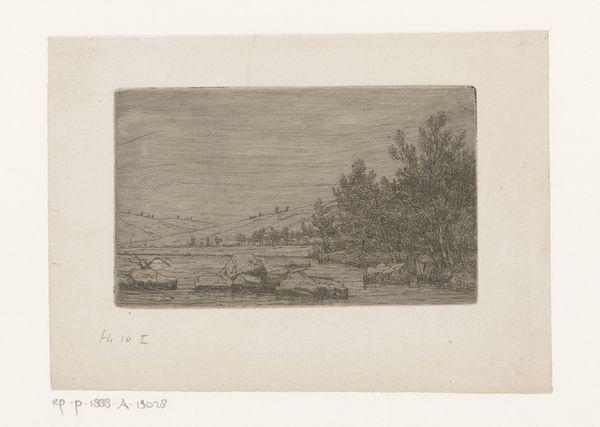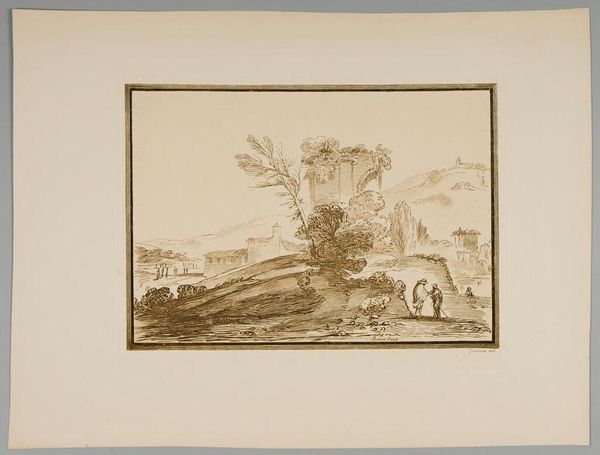
print, etching
#
neoclacissism
# print
#
etching
#
landscape
#
line
Dimensions: 50 mm (height) x 77 mm (width) (plademaal)
Editor: This is "Pyramide og ruiner" by Johan Büllow, created between 1751 and 1828. It's an etching, a landscape print in black and white, that gives me a slightly melancholy feeling, contemplating past civilizations perhaps. What layers do you see in this piece? Curator: What strikes me is the combination of the pyramid, symbolizing ancient Egyptian power structures, and the crumbling Roman ruins. Büllow, working during a period heavily influenced by neoclassicism, seems to be using these recognizable symbols of empire to prompt a critical perspective. What happens when societies that saw themselves as permanent collapse? Does it make you think about colonialism and how these empires leave an impact on our current society? Editor: I see what you mean. The ruins and pyramid side-by-side suggest that even the grandest empires are temporary. Thinking about it in our context, with global power dynamics constantly shifting... it’s sobering. Curator: Precisely! The piece acts as a memento mori on a societal level, perhaps critiquing the present by referencing the past. How do you interpret the way Büllow utilizes line? Does that contribute to any meaning for you? Editor: The delicate lines highlight the fragility of it all. They really emphasize the erosion and decay. Curator: And perhaps subtly criticising our assumptions of permanence or, maybe even worse, dominance? The print challenges viewers to confront the fleeting nature of power. A poignant reminder of our responsibilities within existing societal frameworks. Editor: I see it. Thank you, this was very enlightening! Curator: It's been a pleasure; hopefully, others find inspiration within this small, but provocative, print.
Comments
No comments
Be the first to comment and join the conversation on the ultimate creative platform.

